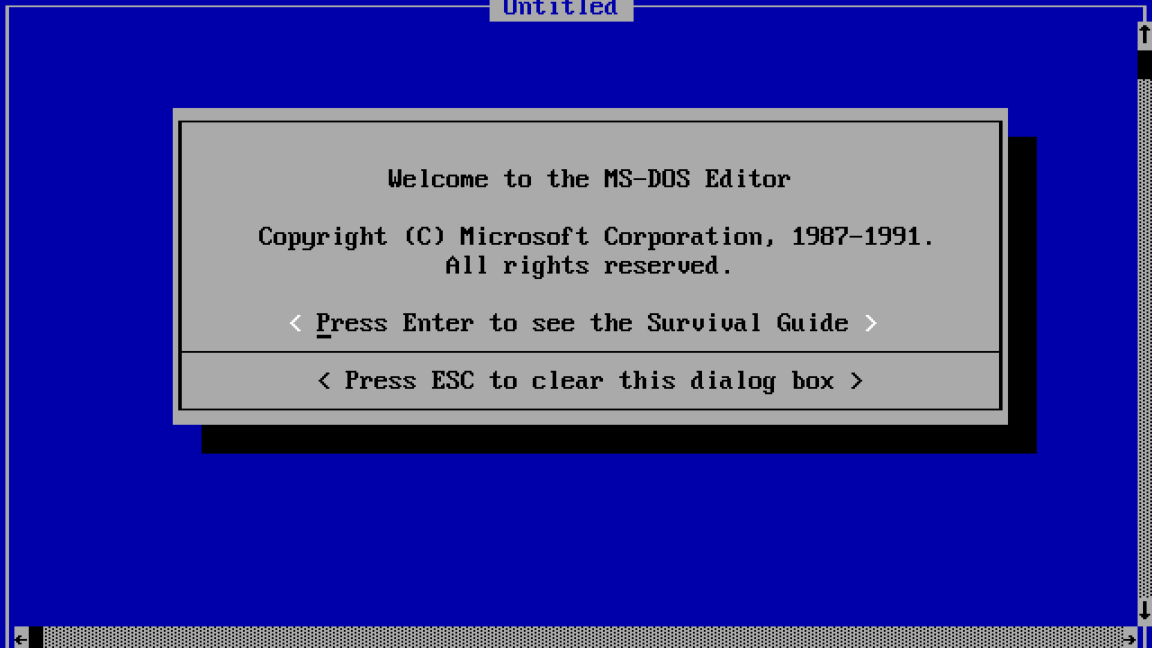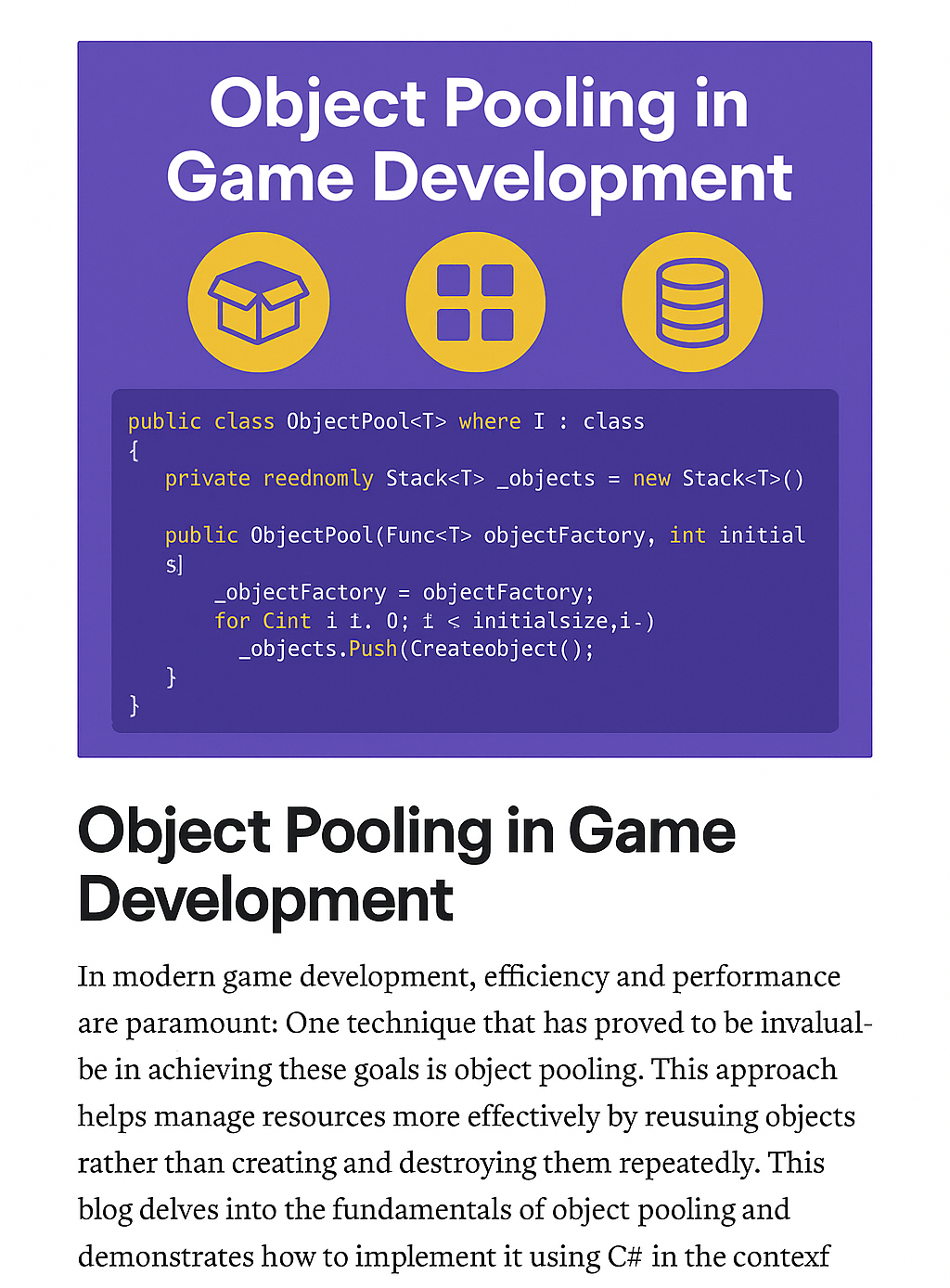Programming News
Arstechnica
373

Image Credit: Arstechnica
Microsoft surprises MS-DOS fans with remake of ancient text editor that works on Linux
- Microsoft released a modern remake of its classic MS-DOS Editor, called 'Edit,' built with Rust and compatible with Windows, macOS, and Linux.
- Users are delighted to run Microsoft's text editor on Linux after 30 years, offering a nostalgic experience.
- The original MS-DOS Editor introduced full-screen interface, mouse support, and navigable pull-down menus, setting a new standard in text editing.
- Microsoft addresses the need for a default CLI text editor in 64-bit Windows by creating 'Edit,' a lightweight tool with modern features.
- Developers have shown mixed-to-positive reception towards Microsoft's new open source 'Edit' tool, praising its cross-platform usability.
- The new 'Edit' editor offers Unicode support, regular expressions, and can handle gigabyte-sized files, a significant upgrade from the original MS-DOS Editor.
- Users can download 'Edit' on GitHub or through an unofficial snap package for Linux, emphasizing its broad accessibility.
- The lightweight and efficient nature of 'Edit' highlights a newfound appreciation for fast and simple tools in software development.
- Despite 34 years of tech evolution, Microsoft's 1991 design philosophy with MS-DOS Editor still resonates in 2025, signifying the enduring principles of text editing.
Read Full Article
22 Likes
Programesecure
107

The Rise of Autonomous AI Agents: How LLMs Are Transforming the Digital Workforce
- Autonomous AI agents powered by LLMs like GPT-4 are reshaping digital work in 2025 by handling tasks independently.
- LLMs enable autonomous AI agents to reason, plan, and act without constant human input, functioning as digital team members.
- Key features of AI agents include autonomy, goal orientation, memory, and multi-modal capabilities like processing text, images, and more.
- Frameworks like AutoGPT, AgentGPT, and OpenAgents facilitate the development and deployment of AI agents for various tasks.
- Real-world applications of AI agents span customer service, marketing, research, finance, and software development, augmenting human capabilities.
- AI agents excel over traditional automation by adapting to unstructured tasks, learning from experience, and applying reasoning and creativity.
- Challenges like hallucinations, security risks, over-reliance, and ethical dilemmas accompany the adoption of autonomous AI agents.
- Modern AI agents leverage tools like vector databases, APIs, and web access to emulate human interns in research, planning, and execution.
- AI agents reduce costs, enhance efficiency, and transform digital workflows in departments like operations, customer service, and content.
- The collaboration between humans and AI agents is seen as a partnership, with agents complementing human skills in various fields.
Read Full Article
6 Likes
Javacodegeeks
62

Image Credit: Javacodegeeks
Serverless Spring Boot on AWS Lambda Using SnapStart
- AWS Lambda SnapStart significantly reduces cold start times for Spring Boot applications by pre-initializing and snapshotting the runtime state.
- SnapStart is available for Java 11 and 17 runtimes and supports Amazon Corretto.
- Spring Boot apps traditionally had long startup times due to classpath scanning, dependency injection, and auto-configuration, making them unsuitable for high-performance serverless workloads.
- SnapStart can reduce the startup delay for Spring Boot serverless apps to under 300ms.
- To enable SnapStart, Java 11+ Lambda functions deployed using Zip package type need specific configurations in AWS SAM or Serverless Framework.
- Enabling SnapStart has shown up to a 90% reduction in cold start latency for Spring Boot functions.
- Best practices for deploying Spring Boot with SnapStart include using versions & aliases, tuning JVM flags, and monitoring with CloudWatch.
- SnapStart is limited to Java 11 and 17, Zip-based Lambda deployments, and may have issues with reflection-heavy frameworks.
- With SnapStart, Spring Boot on AWS Lambda becomes practical for production use, offering the Spring ecosystem's power with serverless scalability.
Read Full Article
3 Likes
Medium
203

Image Credit: Medium
Why Postgraduate Education like MCA or MBA is Your Best Investment for a Future-Proof Career
- Postgraduate education like MCA or MBA is essential in the evolving job market.
- MCA and MBA programs provide specialized skills and strategic thinking for career advancement.
- MCA focuses on software development, cybersecurity, AI, and data analytics.
- MBA offers leadership skills in marketing, finance, HR, operations, and entrepreneurship.
- These postgraduate programs bridge the gap between education and employability.
- Key benefits include higher salaries, promotions, job security, and industry relevance.
- MCA and MBA degrees open doors in private and public sectors, research, startups, and global roles.
- They provide exposure to industry projects, internships, and placements.
- A postgraduate degree prepares individuals not just for the next job but for the next decade.
Read Full Article
12 Likes
Discover more
- Software News
- Web Design
- Devops News
- Open Source News
- Databases
- Cloud News
- Product Management News
- Operating Systems News
- Agile Methodology News
- Computer Engineering
- Startup News
- Cryptocurrency News
- Technology News
- Blockchain News
- Data Science News
- AR News
- Apple News
- Cyber Security News
- Leadership News
- Gaming News
- Automobiles News
Medium
41
Image Credit: Medium
The Fundamentals of Software Architecture: From Models and Utilities to Services and Controllers
- Dealing with messy codebases is a common challenge for developers, often containing a mix of coding styles and approaches.
- The emphasis on quick delivery sometimes leads to compromising code quality and architecture standards.
- Codebases may become problematic due to the culture of prioritizing rapid deployment over thoughtful development.
- Encountering sprawling code with multiple functionalities in a single file is a typical scenario, showcasing the lack of clean, modular design.
Read Full Article
2 Likes
Medium
66

Image Credit: Medium
Mastering Object Pooling in Game Development with C#
- Object Pooling is a game development technique used to optimize performance by reusing GameObjects instead of instantiating and destroying them repeatedly.
- Benefits of Object Pooling include reduced memory allocation, consistent frame rates, and suitability for various in-game elements like projectiles, enemies, particles, effects, and NPCs.
- Object Pooling helps avoid performance issues such as memory spikes and inefficiencies related to GameObject instantiation and destruction.
- Challenges in Object Pooling include hardcoding pool size, accidental object destruction, retaining references to inactive objects, and not prewarming the pool.
- Implementing Object Pooling can reduce garbage collection, improve frame rates, and enhance memory management.
- In Unity (C#), Object Pooling is simplified using techniques like SetActive() and prefab reuse, making it easy to implement.
- Object Pooling is scalable and customizable, allowing for features such as auto-expansion, timed returns, and preloading.
- Object Pooling is crucial for optimizing game performance, especially in scenarios with frequent instantiation and destruction of GameObjects.
- Proper implementation of Object Pooling can lead to smoother gameplay experiences and better resource utilization in games.
- Understanding the importance of Object Pooling in game development can help developers create more efficient and performant game experiences.
- Object Pooling offers solutions to common game development challenges associated with managing GameObjects efficiently.
- By reusing objects instead of creating and destroying them constantly, Object Pooling contributes to better performance and stability in games.
- Unity provides built-in tools and functionalities that support the implementation of Object Pooling for improved game performance.
- Object Pooling is particularly useful in scenarios where projectiles, enemies, particles, effects, and NPCs are frequently spawned and destroyed.
- Efficient use of Object Pooling in game development can lead to more responsive and optimized gameplay experiences.
- Object Pooling in Unity (C#) is a valuable technique for enhancing game performance and managing resources effectively.
Read Full Article
3 Likes
Medium
311

Chapter 6: Decisions, Decisions — Learning Decision Trees
- Decision Trees are a more approachable model compared to math-heavy ones like SVMs, offering simplicity and interpretability.
- These trees work by asking binary questions about features to make predictions, resembling a logical flowchart.
- The algorithm prioritizes the most informative splits first, highlighting crucial features in the dataset.
- A common issue with Decision Trees is overfitting, which can be addressed through techniques to prevent chasing noise patterns in training data.
- Decision Trees are highly interpretable as one can trace the path from input features to predictions, crucial for applications requiring explainability like healthcare or finance.
- Visualizing the tree structure and decision boundaries helps understand how splits are made, solidifying the concept of 'feature importance'.
- Chapter 6 provided a comprehensive understanding of Decision Trees, emphasizing their decision-making capabilities and methods to avoid pitfalls like overfitting.
- The chapter increased confidence in utilizing Decision Trees effectively in real-world scenarios by explaining data splitting mechanisms and potential errors.
- Next topic: ensembles, covering the combination of multiple trees to enhance model strength.
Read Full Article
18 Likes
Medium
265

Chapter 5: Getting to Know Support Vector Machines (SVMs)
- SVMs are algorithms used for classification and regression, focusing on finding a decision boundary with maximum margin.
- Support vectors are crucial points that influence the boundary, while other points are not as significant.
- The kernel trick helps project data into higher-dimensional space for better separation without explicitly computing those dimensions.
- Tuning parameters like C and gamma in SVMs can significantly impact the flexibility of models, especially in noisy datasets.
- SVR, or Support Vector Regression, uses margins to predict continuous values instead of probabilities or labels.
- The chapter made SVMs more practical and less abstract, suitable for small-to-medium-sized datasets.
- The chapter was theory-heavy but demonstrated through visuals and implementation, aiding in understanding decision boundaries and model behavior.
- The reader is looking forward to exploring Trees and ensembles in the next section.
- Interest in sharing notes or experiences with SVMs is expressed for mutual learning and exchange.
Read Full Article
15 Likes
Dev
203

Image Credit: Dev
How I Build My Developer Portfolio (Without Burning Out)
- Building a developer portfolio can be challenging and may bring about imposter syndrome.
- Week 1 involves planning before coding to determine the type of work desired, preferred tech stack, and target audience.
- Choosing 3 project ideas reflecting the developer's preferences is crucial.
- Week 2 focuses on building smart projects without over-engineering or perfectionism.
- Week 3 involves creating the portfolio site with sections like About Me, Projects, and Contact.
- Week 4 is about polishing the projects and fixing any bugs before publishing.
- Clarity, consistency, and a deadline are more important than numerous projects.
- Starting small with 2-3 quality projects can help junior or mid-level developers get noticed.
- The key is to showcase projects well and hit publish to attract potential opportunities.
Read Full Article
12 Likes
Javacodegeeks
78

Image Credit: Javacodegeeks
How to Map Nested Properties Using MapStruct
- This article discusses how to perform nested mapping using the MapStruct library, commonly required in enterprise applications with complex data structures.
- MapStruct generates efficient mapping code at compile-time, reducing boilerplate code for object mapping tasks like converting domain models to DTOs.
- The example involves mapping a music library model structure with nested objects like Song and Track to a flattened DTO structure for better data representation.
- Maven configuration includes the MapStruct dependency and annotation processor plugin for compilation to handle nested mappings effectively.
- Source entity classes (Library, Song, Track) and target DTO classes (TrackDTO, SongDTO, LibraryDTO) are defined for mapping purposes.
- The mapper interface (LibraryMapper) is used to define field mappings, including handling nested properties using @Mapping annotations.
- MapStruct automatically generates implementation classes like LibraryMapperImpl during compilation to execute the defined mappings.
- An example Main class demonstrates how to map entity objects to DTOs and back, showcasing the effectiveness of MapStruct in nested mapping scenarios.
- The article concludes by emphasizing how MapStruct simplifies nested mappings with explicit field mappings and efficient code generation.
- This article would be eligible for web story generation due to its clear explanation of nested mapping concepts using MapStruct with practical examples.
Read Full Article
4 Likes
Medium
257

Why Everyone is Talking About Rust (And Should You Learn It?)
- Rust is a systems programming language created by Mozilla Research in 2010 to make low-level programming safer and faster.
- Rust offers memory safety without garbage collection, concurrency by design, and expressive syntax with strong tooling.
- Rust combines the speed of C/C++, the safety of high-level languages, and modern ecosystem and tooling for developers.
- Real-world use cases include the Linux kernel, cloud services, web browsers, and command-line tools that leverage Rust.
- Learning Rust is recommended for those who prioritize performance, scalability, and future-proofing their skills.
- To get started with Rust, users can install Rust using rustup, study 'The Rust Programming Language' book, and build small CLI tools.
- Rust's focus on correctness can benefit programmers in any language, improving their skills.
- Rust is backed by a growing ecosystem and suits systems programmers, web developers, and code enthusiasts.
- Rust's emphasis on safety, speed, and concurrency makes it a worthwhile investment for long-term skill development.
Read Full Article
15 Likes
Medium
104

Image Credit: Medium
Will AI Replace Me or Make Me Better? A Student’s Honest Take
- The student found using AI for learning to be like a cheat code, quickly getting answers but raised concerns about the depth of understanding achieved.
- AI, particularly ChatGPT, helped explain complex concepts and provided assistance in various tasks, serving as a virtual mentor.
- The convenience of AI support led to a reliance on it but ultimately led to a realization that traditional learning methods were still valuable.
- The student discovered that while AI can provide quick answers and guidance, true learning and problem-solving skills are developed through traditional methods.
- The student observed that despite AI being helpful, it may not always offer the best solutions compared to human interaction and traditional approaches.
- The experience highlighted the importance of maintaining a balance between using AI tools for assistance and preserving human learning processes.
Read Full Article
6 Likes
Medium
386

Understanding Floating-Point Precision Errors in Programming
- Computers represent numbers in binary using floating-point format defined by the IEEE 754 standard.
- Decimal fractions like 0.1 or 0.2 can't always be represented exactly in binary, leading to precision errors.
- The slight errors in approximations of decimal numbers can accumulate during arithmetic operations.
- Rounding errors may lead to unexpected results, like the well-known 0.30000000000000004 representation.
- Strategies to handle floating-point errors include using tolerance for comparisons and rounding results.
- Tolerant comparisons (epsilon) provide a way to check if two floats are close enough, rather than exactly equal.
- For applications requiring precise decimal representation, using Decimal or fixed-point types is recommended.
- Floating-point errors are common in various programming languages, not limited to Python.
- Understanding the limitations of binary math and finite memory can help in mitigating floating-point issues.
- Proper techniques can be applied to write reliable code even with challenging numbers like 0.1 + 0.2.
Read Full Article
23 Likes
Dev
377

Image Credit: Dev
Quarkus 3 application on AWS Lambda- Part 6 Optimization strategies for the cold and warm starts
- The article discusses optimization strategies for cold and warm starts in Quarkus 3 applications on AWS Lambda.
- Previous articles in the series covered running and optimizing Quarkus 3 applications on AWS Lambda with managed Java 21 runtime and GraalVM Native Image.
- Performance measurements included Lambda functions using 1024 MB memory, specific Java compilation options, x86_64 architecture, and default Apache HTTP Client.
- Optimization techniques for additional Lambda performance improvements are introduced in this article.
- Suggestions include trying different memory settings, using Lambda arm64 architecture, and exploring various synchronous and asynchronous HTTP clients.
- Different Java compilation options and excluding unused dependencies can also impact cold and warm start times.
- The article emphasizes the importance of measuring performance improvements and potential optimization strategies for Quarkus 3 applications on AWS Lambda.
Read Full Article
22 Likes
Self-Learning-Java
332

Understanding LangChain4j’s Modular Architecture: Core, Tools & Integrations
- LangChain4j is a Java-based library for integrating large language models (LLMs) into applications.
- The library has a modular structure allowing developers to choose components based on their needs.
- The core module (langchain4j-core) provides essential abstractions like ChatModel and EmbeddingStore.
- The main module (langchain4j) builds on the core with utilities like Document Loaders and AI Services.
- Integration modules (langchain4j-{provider}) offer optional third-party integrations like LLM Providers and Embedding Stores.
- LangChain4j aims to simplify LLM integration while providing flexibility for different use cases.
- The library is designed for anything from basic LLM interactions to complex AI-augmented workflows.
- Overall, the modular architecture of LangChain4j balances simplicity and flexibility.
- Developers can customize dependencies based on their project requirements.
- Understanding the structure helps in tailoring the library for lightweight LLM calls or advanced AI applications.
Read Full Article
19 Likes
For uninterrupted reading, download the app